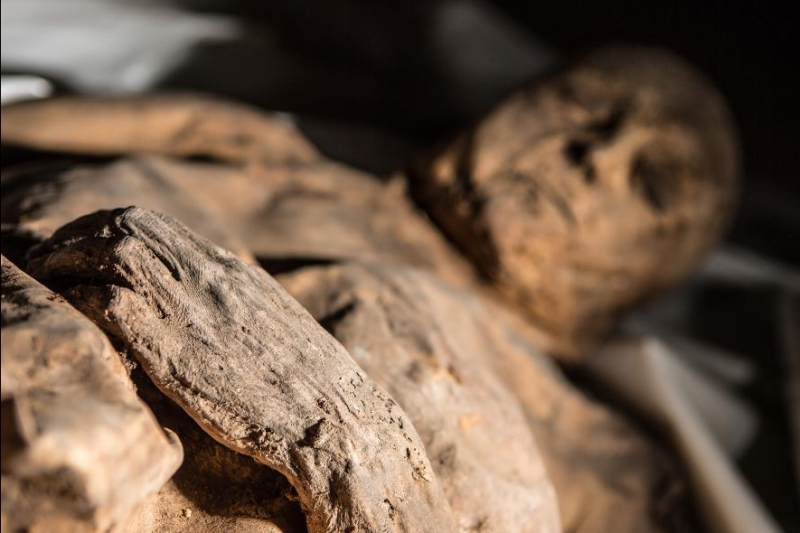Unexpected Smallpox
A young girl in a Lithuanian church was revealing secrets.
Secrets about her life. And her disease.
Some were secrets that had been anticipated. But then. As scientists continued to examine the girl’s naturally mummified remains, they were in for a surprise.
Variola major. Smallpox!
They were looking for something else entirely among the mummies in the crypt. But this was smallpox alright.
Enquiring Minds
For centuries, smallpox was the world’s most feared death-dealing disease. After all, no treatment for it has ever been found. And during the great pandemics, historians say, smallpox was kept from depopulating the entire world only because those who survived an attack of smallpox were almost universally immune to any further attack.
Given a disease so terrible, we have always sought answers.
Where did smallpox come from? How? And how long ago?
Don’t expect me to answer those questions. Even the scientists can’t answer the how and where. Did it originate as a disease in animals and jump to humans? Was it a mutation of a milder pox disease? They don’t know.
And the when? Well, that’s another story. Since this new scientific discovery reported in December of 2016, all my previous sources need to update their information.
Lithuanian Mummy Rewrites Smallpox History
The little Lithuanian tossed on its head the long-held belief that smallpox has been with us for more than 3,000 years. At the very least the new findings call that history into serious question.
Using the science of molecular genetics, an international team of investigators believes this young Lithuanian girl had the earliest known case of modern smallpox.
Her body was interred between 1643 and 1665, not 3000 years ago.
Peering Back in Time

I don’t pretend to understand constructing a “molecular clock” or sequencing DNA. But somehow through this science, the researchers have placed the origins of modern smallpox at “no earlier than about 1588.”
What about Ramses?
Ramses V who died in 1157 BC (per Britannica) had long been considered the first identified case of probable smallpox. This new research suggests that the scars on the Ramses mummy were likely from a different pox-like disease.
And epidemics in 2nd century Rome, 4th century China and others are now blamed on an as yet unknown pathogen. But something other than smallpox.
What about Elizabeth I, the last of the Tudors?
Queen Elizabeth I of England has been reported to have come down with smallpox at Hampton Court Palace on October 10, 1562 at the age of 29. I wonder–does 1562 fall within the range of “no earlier than about 1588″ the researchers gave as the earliest date for smallpox as we know it?
Makeup covered Elizabeth’s mild or moderate scars, but according to the Tudor Society her friend Lady Mary Sidney nursed Elizabeth through her illness, caught the disease and was horribly disfigured for life. Lady Mary’s husband wrote:
When I went to Newhaven [Le Havre] I lefte her a full faire Ladye in myne eye at least the fayerest, and when I retorned I found her as fowle a ladie as the smale pox could make her, which she did take by contynuall attendance of her majesties most precious person (sicke of the same disease)….Henry Sidney in his Memoir of Service, Courtesy of the Tudor Society
Whatever the illness was, in his contemporaneous writing Lady Mary’s husband called it “the smale pox.”
Scientists Enquiring Still
The scientists studying the Lithuanian mummy say they need other ancient samples to affirm or disprove the history of smallpox. A reminder that what we consider to be scientific fact today can be discarded tomorrow with some new discovery.
To find out why researchers reached their current conclusions, read this December 8, 2016 National Geographic article. Or read the original report of the same date in the journal Current Biology.
Child Mummy Found With Oldest Known Smallpox Virus

I am neither a scientist nor a physician. But in Africa I saw close up views of smallpox. Because of that experience and because my husband was involved in the historic achievement of eradication, I share my lay insights with you.
I’ll be back soon with a roll-call of kings and commoners felled by smallpox.
Fascinating, as usual, Bee. One feels so sad about the poor helpless little children who suffered so horribly from the disease.
Thanks for your comment, Janice.
Thank you Bee for Sharing.
Sent from my iPhone
>
It’s a privilege to give this information a bit wider audience, Mary. Thank you for reading.
Science is such a puzzle, and its subjects so complex that we’ll never have all the pieces. Putting together the pieces we do have is a creative process, one that links scientists and artists. A fiction writer and poet with a lively interest in the sciences, I thank you for this new information, Bee.
It’s my privilege to spread the word about smallpox and about Africa as well. Thank you, Pam Fox, for visiting my site. I so appreciate your comment.
There’s so much in this world that I know little about, and today I’ve discovered another! Thanks, Bee, for opening another fascinating path to explore. I eagerly await your book!
Thank you, Kathy McIntosh, for reading and for your comment. The whole global health community has thought for years that Ramses V was the first known smallpox victim. So this is a new discovery for me too, and I wonder how long it will be before I have to write a revised “re-writing smallpox history” post.